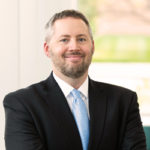
By Damon Dierker, OD
Sept. 15, 2021
Nearly 16 million Americans have dry eye, according to the National Eye Institute. Chances are many more remain without a dry eye diagnosis, confused about why they are experiencing eye and vision discomfort.
The opportunity for optometrists to build their medical practice by identifying and treating these patients couldn’t be greater. Here is how I have grown a dry eye disease (DED) center that has steadily grown 20-30 percent year over year since 2014.
Presently, I diagnose approximately 500 new patients annually with DED. I’m typically seeing about 300 patients per month for DED as their primary reason to be seen in our OD-MD clinic. Many more have DED as a secondary complaint. DED-dedicated visits account for about 50 percent of all patient encounters, but approximately 75 percent of the revenue generated in my clinic. The growth of my DED clinic has necessitated hiring more optometrists to delegate other services I have traditionally provided.
Cost to Diagnose Patients Doesn’t Have to Be High
My basic treatment approach involves identifying and treating ocular surface inflammation, lid biofilms and meibomian gland obstruction. However, there is no cookbook for DED treatment and our office develops a personalized treatment plan to address the goals of each patient. The DEWS2 report nicely outlines available treatment options in a step-wise fashion. In-office treatment, which should be considered relatively early in the treatment course, generates several hundred thousand dollars per year in my practice.
Beyond obtaining a good history and physical exam, the investment necessary to diagnose a DED patient can be less than a dollar. This would include a printed symptom questionnaire and a couple of strips of vital dye. Point-of-care diagnostics including tear osmolarity testing, and detection of MMP-9 levels adds greater specificity and sensitivity and generates positive cash flow. I perform these diagnostic tests at every DED visit.
Adding slit lamp photography/videography to the dry-eye diagnostic workup is about $15,000-$20,000 and meibography is about $10,000. Devices that can do multiple things, including non-invasive tear breakup time, interferometry, meibography, topography, among other things, are $15,000-$25,000. We purchased these outright in our practice. These devices pay for themselves in a matter of a few months as they improve patient education and retention, as well as conversions to in-office procedures. They allow me to see more patients and make more accurate diagnoses.
Build a Referral Network
I work directly with optometrists and ophthalmologists. I estimate that about 30 percent of my referrals are from internal and external optometrists, 30 percent from internal and external ophthalmologists, 30 percent self-referred and 10 percent from other healthcare providers (rheumatologists, primary care providers, oncologists). We use our website and social media to market our services, but I think most referrals are due to the success that our patients are having. They are eager to share with friends and family where they go to get an accurate diagnosis and, at least most of the time, symptomatic relief.
Create a Dry Eye Clinic
I am in our clinic four days per week and an average week would involve seeing about 75 DED patients. I have one day where that is all I do. This clinic consists of moderate-to-advanced cases with many in-office procedures. I think ODs should consider (to start) having a half-day per week, or every other week, devoted to DED patients if they are looking to expand this area in the practice.
Dry Eye Resources
OTC and Rx Dry Eye Treatment
We sell over-the-counter dry eye products including nutraceuticals, heat masks, moisture goggles, lid hygiene products and artificial tears. We sell these in all our office locations and also have partnered with Dryeye Rescue to offer products online. We get a percentage of the products if a patient purchases online. Revenue for sales of these products is in the six figures annually.
We have partnered with a local specialty pharmacy to help our patients obtain prescription DED medication at the lowest possible cost with the least amount of hassle. This concierge service also helps with obtaining prior authorizations, saving valuable staff time.
A medication I prescribe on a daily basis is Restasis, a topical immunomodulator that is indicated to improve tear production in patients with DED. Inflammation can be found in all types of dry eye and is a primary therapeutic target. I will typically consider prescribing Restasis in symptomatic patients who have failed artificial tears and have signs of dry eye (i.e. increased tear film osmolarity, rapid tear breakup time or ocular surface staining).
Other Articles to Explore
Train to Support Doctors in Dry Eye Services
A successful DED practice requires a team approach. Everyone in our office knows we take dry eye seriously and understands the treatments we offer. My technician team is capable of screening patients, educating them about their condition and my treatment recommendations, and performing in-office treatments when required.
With the right treatment approach, and by working as a team in the practice to deliver essential dry eye services, you can both help many patients and make dry eye treatment an engine of growth and profitability.
 Damon Dierker, OD, is a partner with Eye Surgeons of Indiana, an OD-MD practice. To contact him: damon.dierker@esi-in.com
Damon Dierker, OD, is a partner with Eye Surgeons of Indiana, an OD-MD practice. To contact him: damon.dierker@esi-in.com

























